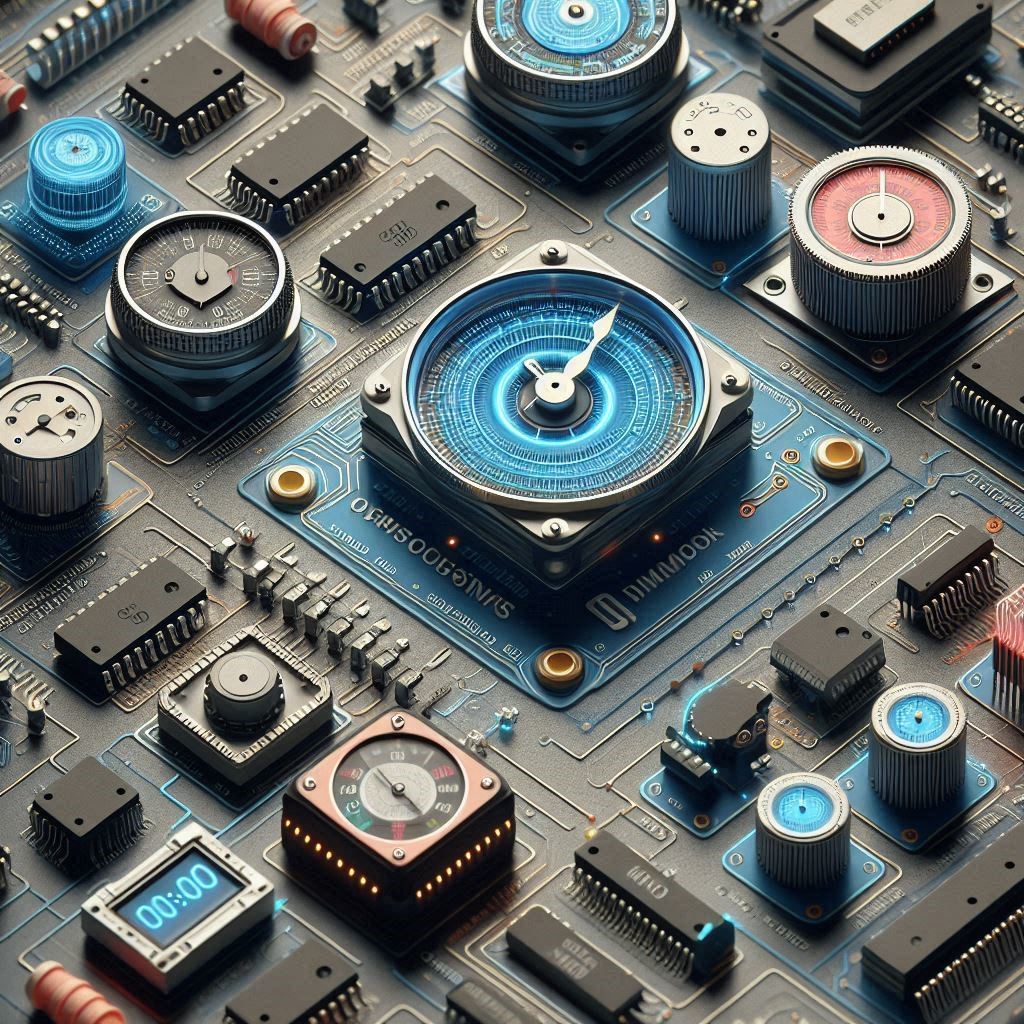Timing devices—such as oscillators, clocks, and crystal resonators—are foundational to nearly every modern electronic system. From synchronizing signals in high-speed processors to enabling reliable data transmission in wireless networks, precise timing is essential across industries like telecommunications, aerospace, automotive, and IoT. As systems become more complex and demand ultra-low latency, higher stability, and resilience under environmental stress, the AI impact on timing devices industry is experiencing a transformative shift. At the center of this evolution is Artificial Intelligence (AI), bringing with it powerful tools for design optimization, predictive performance monitoring, manufacturing precision, and real-time adaptability.
AI-Enhanced Design and Simulation of Timing Circuits
Traditionally, the design of timing circuits involved empirical modeling, iterative simulations, and manual tuning of resonator characteristics. With AI, particularly machine learning (ML) and reinforcement learning, the design process has become significantly more data-driven and efficient.
AI algorithms can:
-
Simulate and predict phase noise, jitter, and frequency stability across different use conditions.
-
Optimize component selection and layout for specific performance goals like low power or thermal stability.
-
Model nonlinear behaviors in MEMS oscillators or quartz crystals that are difficult to capture using classical equations.
This leads to faster time-to-market, better product performance, and reduced design overhead—especially important as timing solutions move into demanding domains such as autonomous vehicles and space-based systems.
Predictive Maintenance and Lifetime Monitoring
In mission-critical applications such as aerospace, defense, or medical systems, timing drift, aging, and degradation of components can have serious consequences. AI is now being used to monitor timing devices in real-time, using telemetry data to detect early signs of failure or performance drift.
AI-powered systems analyze:
-
Frequency deviations and temperature compensation behavior.
-
Long-term aging trends of quartz or MEMS resonators.
-
Environmental stress impacts like vibration, radiation, or humidity.
By building predictive models, manufacturers and system integrators can forecast failures and schedule maintenance before a timing device fails, reducing costly downtime and improving system reliability. This is especially relevant for atomic clocks, GPS-disciplined oscillators, and satellite timing systems that operate in harsh or inaccessible environments.
Download PDF Brochure @
https://www.marketsandmarkets.com/pdfdownloadNew.asp?id=121133929

AI in Manufacturing and Quality Control
The production of timing devices requires extremely tight tolerances and precise calibration, often at micro- or nanosecond levels. AI is improving manufacturing in several ways:
-
AI-enabled vision systems detect micro-defects in resonator surfaces and packaging during high-speed inspection.
-
Process analytics using ML identify anomalies in frequency response curves or impedance profiles that could signal manufacturing deviations.
-
Adaptive calibration algorithms optimize tuning processes in real-time, improving throughput and yield.
These capabilities reduce scrap rates, ensure consistent product quality, and allow manufacturers to scale up production for high-demand segments like 5G base stations or automotive radar systems.
Enabling Intelligent Timing in Dynamic Environments
Modern systems require adaptive timing solutions that can respond to changing conditions such as temperature fluctuations, voltage variations, or mechanical stress. AI enables timing devices to become more intelligent and context-aware by:
-
Dynamically adjusting PLL (Phase-Locked Loop) parameters for jitter minimization.
-
Learning optimal configurations for different operating modes (e.g., performance vs. power-saving).
-
Supporting real-time correction algorithms in embedded systems to compensate for signal degradation or network latency.
This is particularly valuable in edge computing, industrial IoT, and robotics, where consistent synchronization is crucial despite variable environments.
AI in Synchronization for Next-Gen Networks
With the rollout of 5G and future 6G networks, precise timing and synchronization are more critical than ever. AI contributes by:
-
Analyzing network performance data to ensure synchronization accuracy between nodes.
-
Predicting timing faults in network equipment and triggering auto-correction routines.
-
Supporting time-sensitive networking (TSN) protocols by modeling and optimizing network-wide clock drift and phase offsets.
As telecommunications infrastructure becomes more decentralized and software-defined, AI helps maintain nanosecond-level accuracy across distributed systems.
New Business Models and Custom Timing Solutions
AI also opens the door to customized, application-specific timing devices. For instance, AI-based configurators can allow customers to define their timing needs (frequency, stability, size, temperature range), and the system auto-generates optimized timing solutions with minimal human intervention.
Furthermore, manufacturers can now offer “timing-as-a-service”—cloud-connected modules that use AI to receive updates, monitor performance remotely, and adjust parameters for different regions or use cases, providing maximum flexibility and lifecycle value.
Challenges and the Path Forward
Despite its promise, integrating AI into the timing devices industry poses challenges:
-
Data quality and standardization are critical; noisy or inconsistent test data can mislead AI models.
-
Many traditional timing experts must learn new AI tools or collaborate with data scientists for effective implementation.
-
Ensuring that AI models are explainable and certifiable is crucial, especially in regulated industries like aerospace and healthcare.
Nonetheless, the momentum is strong. With increasing demand for precise, reliable, and intelligent timing in everything from autonomous systems to quantum computing, the synergy between AI and timing technology is only expected to grow.
The impact of AI on the timing devices industry is redefining how time is measured, maintained, and managed across electronic systems. From accelerating innovation in oscillator design to enabling predictive maintenance, AI is pushing the boundaries of precision, reliability, and adaptability. As timing moves beyond just frequency generation to become a core enabler of intelligent systems, AI will serve as the compass guiding its evolution. For manufacturers, designers, and end users alike, the future of timing is not just accurate—it’s intelligent.
